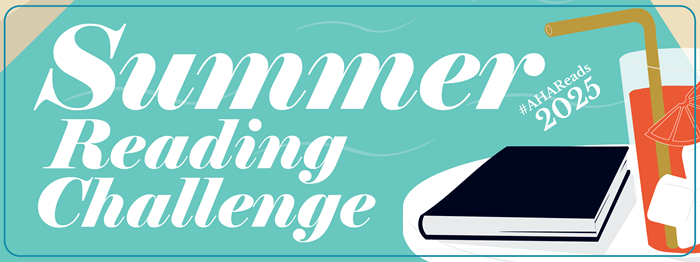As a first-year graduate student, fresh out of college, I knew that academics somehow got into print. That was the imperative behind “publish or perish,” the meaning of which seemed rather ominous. Already fearful of the academic job market, I figured that I better publish something, be it an encyclopedia entry, a book review, or an article. I assumed that publications emerged out of an agonizing, solitary struggle, and thus looked ahead to the challenge, ignorant of the many complicated steps in the process that turned messy seminar papers, full of red-pen corrections and professorial admonitions, into one of those seemingly pristine and authoritative journal articles.
Bylines Are Misleading
By the time I filed my dissertation, with a couple of articles under my belt, I had learned this simple truth: bylines are misleading. Even the pages of acknowledgements or the few sentences in the first footnote of an article listing friends and colleagues do not adequately capture the collaborative effort between the named author, mentors, peers, anonymous readers, and editors. Whatever art there is in publishing an article, it always takes an academic village to bring it to life in the pages of a journal or edited collection.
My publications originated out of my graduate training at the University of California, Santa Barbara. I finished all first drafts in seminars before I finished my qualifying exams. Nelson Lichtenstein, my committee chair, encouraged me to see such required courses as opportunities to scout out source material, explore the literature for a larger project, and ponder the dissertation’s ultimate shape, scope, and contribution.
From the minute that I walked into his office during orientation, Nelson urged me to consider every writing requirement as an opportunity to publish. Five-page assignments could become book reviews or op-eds and seminar papers were only successful if they stood a chance at publication or could become dissertation chapters, perhaps both. He emphasized that writing was not a modern-day exercise in monasticism; historical scholarship was a deeply collaborative venture. All historians need a small group of people who will read and comment upon their work with care. Nelson proved a faithful critic of everything I wrote, regardless of who ran the seminar in which I cranked out the first draft.
He was not my only resource. After reading a paper on postwar anti-labor conservatism, Alice O’Connor, who taught the course, and Jill Jensen, a fellow student, raised critical questions about how to prove my overall argument and biggest claims. Both pointed out a real weakness in my initial drafts—my working thesis needed the elusive, all-too-rare smoking gun. Their criticism, encouragement, and advice showed me that, in this case, it could be more appropriate, and still quite salient, to suggest a connection and not to just state it. I could not fully prove, with the archival material that I had at the time, an explicit connection between capital flight and anti-unionism, no matter how much I wanted to. From their feedback, I recrafted my argument to show how words served as weapons against organized labor and liberal statecraft.
I also benefited from reading the work of my classmates. In preparing comments on how they constructed arguments, marshaled their evidence, and framed their research, I better understood both the overall “art of the article” and specific tendencies (good, bad, or otherwise) in my own writing. Mary Furner, my “second chair,” demanded conscious reflection on our own writing in our comments on each other’s drafts. This assignment was eye opening. I had not realized why constructing strawmen was an inappropriate way to enter into historiographic debates until I thought critically about my peers’ work in comparison to my own. In reflecting on this, and other, classroom experiences, I am convinced that in this moment of austerity, reduced graduate student enrollments are as much a threat to academic inquiry as smaller travel budgets, increased teaching loads, and cancelled job searches.
Conference presentations also allowed me both to hone my first publications and to shape my larger research. Graduate history programs across the country now routinely encourage—if not require—students to present their work before larger, national audiences. For me, these panels were initially frightening experiences; yet every discussant or questioner from the floor forced me to focus and recast my arguments. University of Michigan Professor Matthew Lassiter’s comments on my project, for example, proved critical in helping me better understand regional similarities in antiunion politics and identifying embarrassing deficiencies in my understanding of Southern and Southwestern political economies. I loved and hated feedback from audience members and commentators alike. Their criticism seemed paralyzing but always improved my papers and thinking.
When I did send out my revised papers to a journal, I was unprepared for the all-consuming process. Both Nelson and Matthew, who also sat on my dissertation committee, urged me to consider the Journal of American History, a daunting prospect for a first publication. The JAH is not a specialist’s journal: I would be “speaking” to the entire community of American historians, not just those interested in recent urban, labor, or political history. I spent a lot of time reading recent articles, stylesheets, and submission requirements and considering, with Nelson and others, how to give my work a larger meaning. I struggled to fit my papers into page, bibliographic, and style stipulations (thus learning a multitude of footnoting and formatting rules that I had not properly mastered). I wrote and rewrote. Draft after draft came off my printer as classmates, professors, and I pored over them to get them into better shape. And then I listened to Nelson once again: just send it out! What he told me proved true: At a certain point, you just have to put an article in the mail.
Reading Readers’ Reports
I had no idea what to expect after I submitted my piece. The slow pace, convoluted reviewing procedures, and snail mail delays made the review process all the more ominous and disconcerting. I was shocked, bewildered, and relieved when, roughly six months later, I received my initial set of readers’ reports. I read and reread their comments as if I was examining the cryptic details of a pagan prophecy about what the final fate of my article would be. I sought to reconcile what, to me, seemed like a wildly different set of criticisms, suggestions, and proposals for new research. Eileen Boris, another well-published mentor upon whom I had come to rely, told me not to despair even when the criticism seemed overly harsh. She remembered that in the 1970s, as an untutored grad student, she had received a “revise and resubmit” from the American Quarterly, but the reviewers’ tone made her simply abandon the manuscript.
Despite this support and guidance, I had a difficult time publishing two different journal articles simultaneously. The JAH gave me two consecutive revise/resubmits on an article that I had written in Laura Kalman’s seminar as a master’s student. The piece examined Barry Goldwater’s part in a business-led crusade against organized labor and mid-century liberalism. The second round was perhaps the most challenging. While the readers urged its publication, a member of the editorial board demurred, and indicated that while the research was original, I had not sufficiently brought out the significance of the study. This comment showed me that my advisers, fellow students, and I were too close to the project to help me explain its larger significance. I needed a reader unfamiliar with my work. I approached Meg Jacobs of MIT for help. She suggested that I should stand back and explain—in the introduction and elsewhere—to a generalist American historian why labor was a big deal to conservatives in the 1950s and emphasize this narrative as revisionist. I rewrote the introduction. The same skeptical board member wrote a few months later approvingly.
Springboards, Not Roadblocks
This experience taught me a valuable lesson: readers’ reports are springboards, not roadblocks. This insight proved useful when I tried to publish a study of right-to-work laws. This essay was initially rejected by a journal focused on labor history. “I read this paper expecting to be treated to a description and an analysis of what is one of the more intriguing and interesting developments in mid-and late-20th-century US political and union history, I discovered nothing of the kind,” a reviewer wrote. This line and the subsequent list of failings led me to shelve the article for months. I only braved the process again when Nelson and Paul Spickard, another committee member, encouraged me to give it another go. I considered the criticisms unfair but nevertheless relied upon this report to reshape the piece and argue more effectively about why my findings challenged long-standing, oft-repeated narratives of Western labor politics. Most important, I sent it out again, but this time to the Pacific Historical Review. I had far fewer requests for revision because I had already refined the piece and had learned how to more effectively make my argument. The published article shared the W. Turrentine Jackson Prize for the best graduate student submission that year.
During that otherwise happy encounter with the PHR’s review process, I also discovered that even laudatory reader reports could be maddeningly contradictory at times. While one reviewer praised my “crisply written” attempts to blend profiles of grassroots activists into my analysis, another reader complained both about the writing style and the absence of people. These two conflicting responses highlight how important journal editors, graduate advisers, and peers are to the review process. They were largely responsible for my ability to make sense of contradictory, unclear, or irreconcilable comments.
These happy endings are still cautionary tales for those anxious to appear in print. Publishing articles early can propel their careers forward, but can also delay them. After I spent so much time on these two publications, Nelson forbade me from presenting at conferences or carving more articles out of my still unfinished dissertation until I had a full draft completed. He stressed that my two articles would matter little if I wrote a poor dissertation, let alone let the book needed for tenure languish. He was right. Making my way through the labyrinth of stylesheets, submission guidelines, readers’ reports, and editorial timetables was frustrating, draining, and time consuming.
Thankfully, I had not taken this path of considerable resistance alone. Getting published is never a lonely endeavor. I found, and needed, a gaggle of diligent and supportive critics, reviewers, and editors, who should, probably, have found their names in the bylines, not just in the acknowledgements.
Elizabeth Tandy Shermer is the current Fellow of American History at the University of Cambridge and an assistant professor at Loyola University Chicago. Her first book, Creating the Sunbelt, is forthcoming with the University of Pennsylvania Press.
This work is licensed under a Creative Commons Attribution-NonCommercial-NoDerivatives 4.0 International License. Attribution must provide author name, article title, Perspectives on History, date of publication, and a link to this page. This license applies only to the article, not to text or images used here by permission.


